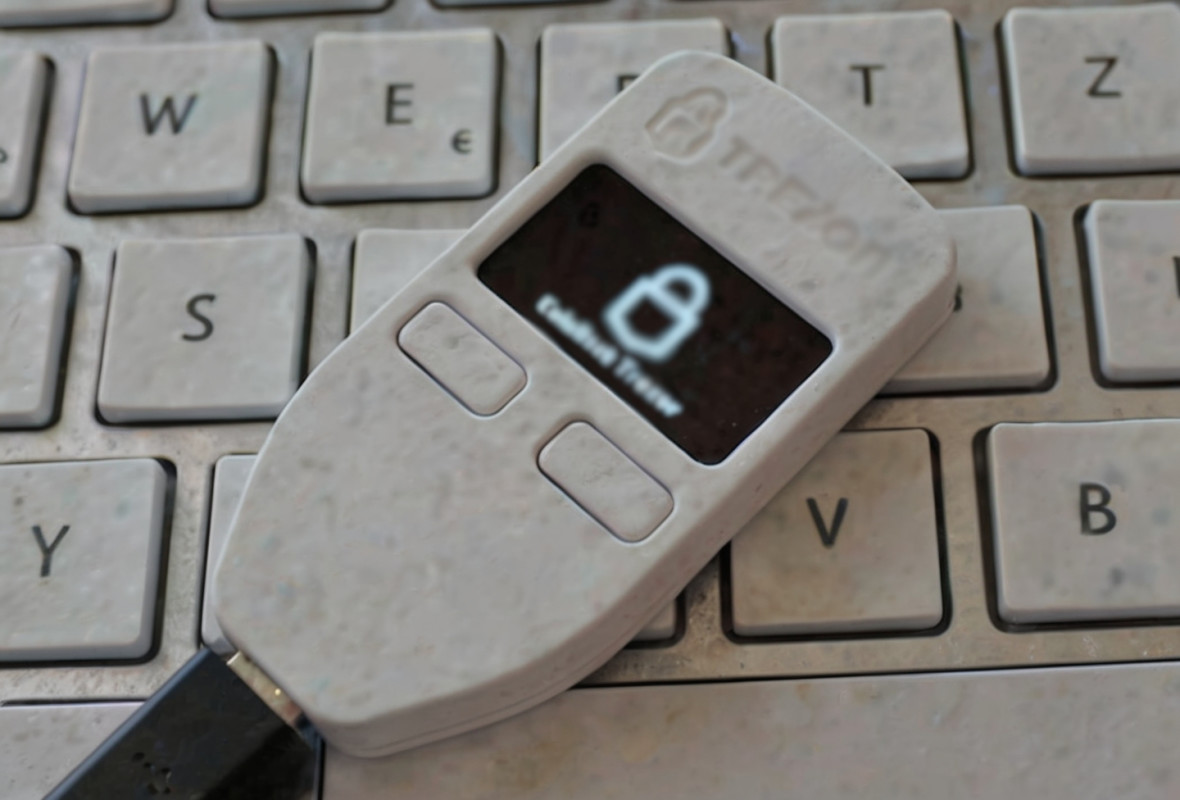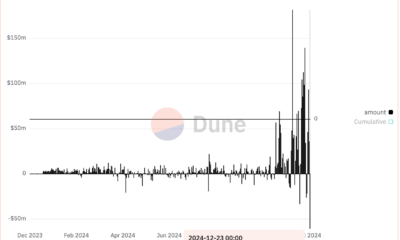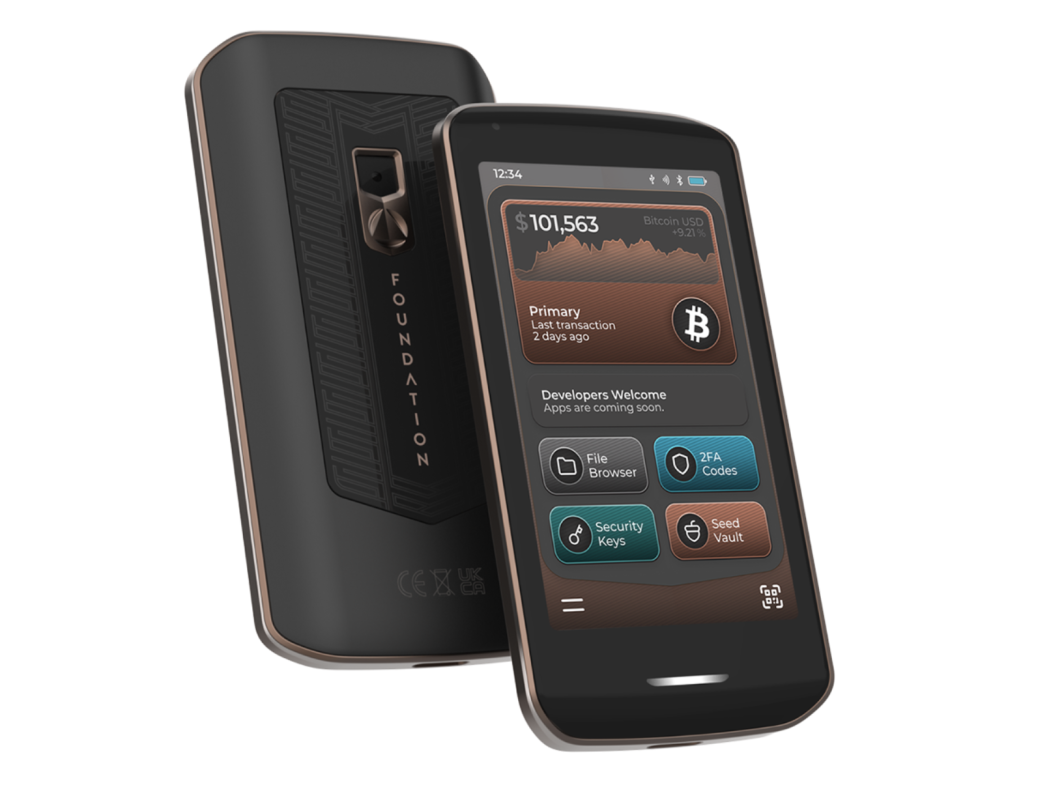hardware wallets
Celebrating 10 Years of the Hardware Wallet Revolution
Published
3 months agoon
By
admin

As we celebrate the 10th anniversary of the first hardware wallet, it’s remarkable to see how far Bitcoin security has come. From the early days of precarious self-custody methods to the game-changing creation of the Trezor Model One, this revolution has transformed the way we protect our digital assets. With a decade of this experience behind us, it’s worth revisiting the challenges of early Bitcoin self-custody, the pivotal impact of the first hardware wallet, the essential role of self-custody in today’s Bitcoin landscape, and the innovative advancements continuing to shape the future of crypto security.
The Origin Story
It all began in 2011 when Marek “Slush” Palatinus logged onto his mining pool server and discovered 3,000 BTC were missing. A mining pool is a collective of miners who combine their computational resources to increase their chances of successfully mining Bitcoin blocks. Slushpool, now known as Braiins Pool, was the pioneering mining pool in the Bitcoin community, established in 2010.
This incident highlighted a significant issue: even tech-savvy Bitcoin enthusiasts could fall victim to online attacks. At that time, securing and managing Bitcoin was a daunting task, involving storing private keys on a computer. However, securing information on a computer is difficult; these complex machines are vulnerable to many threats that allow thieves to steal private keys controlling Bitcoin. The hack that cost Palatinus 3,000 BTC was a reminder of these early vulnerabilities.
Recognizing a pressing need for a simple, stand-alone device that could securely store Bitcoin, Slush, along with Pavol “Stick” Rusnák, embarked on creating the world’s first hardware wallet. Their vision was to develop an offline computer specifically designed to store Bitcoin securely and make it accessible to non-technical users. The concept was straightforward yet revolutionary: a small, single-purpose device that would keep private keys in an isolated environment, protected from online threats.
Before Hardware Wallets
Before hardware wallets became widely available, users had to rely on software wallets installed on computers or smartphones, which exposed them to a range of security threats. Malware infections and other attacks were common. Paper wallets were considered more secure but still required a computer to create the wallet. More secure methods, such as using air-gapped computers for cold storage, required significant technical expertise, and even these methods lacked an adequate level of security for larger amounts of Bitcoin.
The usability of early Bitcoin wallets was also a significant issue, with clunky interfaces and complicated backup processes. Many users failed to back up their wallets properly, leading to permanent loss of funds if a device was lost or damaged. Users were frequently unaware of best practices for backups, and the lack of standardized backup methods further increased the risk. A major improvement in backup standardization came with the introduction of Hierarchical Deterministic (HD) Wallets with BIP32 in 2012, allowing for easier and more reliable backups. Despite these advancements, there was still a lack of easy and user-friendly options for newcomers. In short, the period before Hardware Wallets was marked by significant security and usability challenges, making Bitcoin self-custody a complex and risky endeavor.
The First Hardware Wallet
In the years leading up to 2014, various attempts were made to develop simple, single-purpose devices for cryptocurrency storage. However, these efforts failed to gain traction or meet the necessary security standards. Recognizing the need for a robust solution, Slush and Stick monitored the landscape for two years before they finally decided to create their own hardware wallet.
In 2014, they released the Trezor Model One. This device was the first ever hardware wallet, combining user-friendly design, truly random private key generation, and the ability to easily sign transactions completely offline. In addition, it implemented the BIP39 standard, a new standard created by the Trezor creators to back up wallets using a list of 24 words representing the private keys, a standard adopted by many wallets and familiar to anyone who has put their Bitcoin in self-custody.
When the user first connects the device, it guides them through the setup process to create a new wallet. The device generates a recovery seed, which represents a human-readable version of the wallet’s master private key and enables wallet recovery in case of device malfunction. The user is prompted to write down this list of words on a piece of paper, ensuring the wallet is backed up, and the private keys remain offline.
This onboarding process ensures that users create a backup and keep it secure. The user-friendly design offers advanced security, making hardware wallets accessible to both beginners and experienced users.
The Open Source Advantage
A key aspect of Bitcoin is its commitment to open-source principles, and that’s why the founders of Trezor adhered to the same principles when developing the Trezor Model One. This approach has been adopted by most manufacturers in the industry. Open-source software allows the community to audit and verify a system’s integrity. This transparency ensures that potential vulnerabilities can be identified and addressed promptly and allows improvement by the global community. The first hardware wallet was open source, and many in the industry have embraced this approach for transparency, emphasizing the Bitcoin ethos, “Don’t trust; verify.”
The Importance of Self-Custody
Throughout Bitcoin’s life, we have seen many crypto exchanges and custodians collapse or suffer severe security breaches, showing the importance of holding your private keys. The mantra “not your keys, not your coins” emphasizes that relying on third-party institutions means trusting someone else with your assets, which can lead to big problems if the exchange gets hacked, mismanaged, or faces legal issues.
The Mt. Gox incident in 2014, one of the earliest and most notable exchange collapses, saw the loss of 850,000 Bitcoins, valued at hundreds of millions of dollars at the time. This catastrophic failure was due to both hacking and mismanagement, leaving users unable to recover their funds. Bitfinex also suffered a significant hack in 2016, resulting in the theft of nearly 120,000 Bitcoins. QuadrigaCX in 2019 saw users losing access to their funds after the sudden death of its founder, who was the only one with the keys to the exchange’s wallets. Cryptopia faced a debilitating hack in 2019, and Binance, the largest cryptocurrency exchange by volume, has also experienced breaches and faces increasing regulatory scrutiny. More recently, the FTX collapse in 2022 further reinforced the dangers of entrusting assets to centralized entities. Overall, mismanagement and fraudulent activities led to the loss of billions, impacting countless users and shaking confidence in centralized exchanges.
By using hardware wallets, individuals can achieve true financial independence, keeping their digital assets safe from the vulnerabilities of trusted custodians.
The Evolving Landscape of Hardware Wallets
Over the past decade, the hardware wallet industry has greatly expanded, with many companies offering a variety of products and features to meet different needs. User interfaces now range from simple button-based navigation to touchscreens and full keyboards. Many devices now support multiple cryptocurrencies, while some focus exclusively on Bitcoin. This range of devices caters to both beginners and advanced users, ensuring everyone can find a suitable option.
Another advancement has been the inclusion of secure elements—specialized chips designed to protect devices from physical attacks. However, all secure elements currently available on the market are closed-source, which raises transparency concerns. To address this issue, companies like Tropic Square are actively working on developing open-source secure elements to enhance trust and security.
Other significant advancements in the industry aim to enhance the security and robustness of wallet backups. Techniques such as Shamir’s Secret Sharing, Multisignature Wallets, and SeedXOR allow users to remove single points of failure, making it significantly more difficult for thieves to compromise the wallet.
Looking ahead, we can expect more improvements in hardware wallet security and usability. One notable development is the wider implementation of a new enhanced standard, SLIP39, which uses Shamir’s Secret Sharing. This method is becoming preferred over the traditional BIP39 standard due to its enhanced security and user-friendliness. With SLIP39, users start with a single list of words to back up their wallet and can later upgrade to a “sharded” backup with multiple shares. This approach provides a flexible and highly secure solution, making advanced security measures more accessible and practical for a wider range of users.
Looking Forward to the Next Decade
As we celebrate the first Hardware Wallet, it’s clear that this revolution has fundamentally transformed cryptocurrency security. From humble beginnings as a hobby project to becoming a trusted name in the industry, Trezor has pioneered innovations that have empowered countless individuals to take control of their financial future. The journey from the first prototypes to the sophisticated devices that we now use today is a testament to the vision and dedication of the Trezor team.
With the continuous evolution of Hardware Wallet functionality and a commitment to security and transparency, the future looks promising. As we look forward to the next decade, the industry remains dedicated to securing and innovating Bitcoin security and usability, ensuring that self-custody becomes increasingly accessible and secure for all.
This is a guest post by Josef Tetek. Opinions expressed are entirely their own and do not necessarily reflect those of BTC Inc or Bitcoin Magazine.
Source link
You may like


Solana beats Ethereum in a key metric 3 months in a row


SCENE’s 2024 Person of the Year: Iggy Azalea


BTC Risks Falling To $20K If This Happens


Most Layer 2 solutions are still struggling with scalability


Here’s why Stellar Price Could Go Parabolic Soon


Perp-Focused HyperLiquid Experiences Record $60M in USDC Net Outflows
business
Foundation Introduces Passport Prime: Bitcoin Wallet And Data Security Device
Published
4 days agoon
December 20, 2024By
admin

On Wednesday, December 19, 2024, Foundation announced the release of its newest device, the Passport Prime.
Introducing Passport Prime – Your Personal Security Platform!
We’re thrilled to present Passport Prime, the world’s first personal security platform designed to secure your Bitcoin and your entire digital life.
Think: A Swiss Army Knife for your online security. pic.twitter.com/3HH2eG7vhU
— FOUNDATION (@FOUNDATIONdvcs) December 18, 2024
The device offers a broad range of features that not only help users secure the keys to their bitcoin but other digital information, as well.
Features
For starters, the Passport Prime offers the same bitcoin wallet capabilities as the company’s second generation Passport device, including multisig functionality and temporary seed phrases.
Beyond Bitcoin-related security, the Passport Prime also helps you to store other sensitive digital data.
Its 2FA Codes app lets users store 2FA codes offline, while its Security Keys app serves as a replacement for Yubikeys and allows users to create multiple security keys for use with NFC or USB.
What is more, the device offers an encrypted flash drive. Users can store up to 50 GB of data on the device. And as a means to keep your data private, the Airlock feature in the File Browser app lets users only access selected files when the device is plugged into a phone or computer.
The device also has its own custom operating system — KeyOS — which enables apps to run in their own sandboxes while the OS manages permissions.
Pushing The Hardware Wallet Industry Forward
Earlier this year, Foundation’s co-founder and CEO told Bitcoin Magazine he was looking to create the iPhone of Bitcoin hardware. The Passport Prime is the closest Foundation has come to this ideal yet.
“The hardware wallet industry has been coasting for years, failing to deliver any meaningful innovation and unable to respond to digital assets’ rapidly evolving utility and use cases,” said Zach Herbert, co-founder and CEO of Foundation in a press release.
“Wallets have become crypto’s weakest link: they are difficult to onboard to, complex to use, and increasingly insecure for a range of modern blockchain transactions,” he added.
“Passport Prime is the first device of its kind, a Personal Security Platform that’s fit for the future decentralized economy, making it simple to safeguard all your private keys in one offline device, and sign every kind of transaction or contract with complete peace of mind.”
Third-Party Apps Welcome
By approximately mid-2025, developers will be able to build third-party apps that will run on KeyOS. In other words, developers will be able to list their own apps in Foundation’s App Catalogue.
The first of these third-party apps will be produced by Cake Wallet and will enable users to more privately transact using Bitcoin, Monero and other cryptocurrencies.
Dynamic, Yet Simple and Secure
Foundation claims that setting up and using the Passport Prime will be easy, despite its various functionalities.
Users can set the device up using Envoy, Foundation’s native app that provides guidance for the set up process and that connects to the device via QuantamLink Bluetooth.
QuantamLink Bluetooth is enabled by a dedicated Bluetooth chip embedded in the Passport Prime that can only send and receive messages that are already encrypted using quantum-resistance technology.
Users can also back up their seed via a 2-of-3 Shamir Secret Sharing configuration splits the seed into three pieces — two stored on physical cards and one stored in the Envoy mobile app.
Details
The device will retail for $299 and ship by Q2 2025.
The device comes in two different colors — Arctic Copper and Midnight Bronze — and it’s both completely open-source and manufactured in the United States.
Learn more about the product here.
Source link

Solana beats Ethereum in a key metric 3 months in a row

SCENE’s 2024 Person of the Year: Iggy Azalea

BTC Risks Falling To $20K If This Happens

Most Layer 2 solutions are still struggling with scalability

Here’s why Stellar Price Could Go Parabolic Soon

Perp-Focused HyperLiquid Experiences Record $60M in USDC Net Outflows

Experts say these 3 altcoins will rally 3,000% soon, and XRP isn’t one of them

Robert Kiyosaki Hints At Economic Depression Ahead, What It Means For BTC?

BNB Steadies Above Support: Will Bullish Momentum Return?

Metaplanet makes largest Bitcoin bet, acquires nearly 620 BTC

Tron’s Justin Sun Offloads 50% ETH Holdings, Ethereum Price Crash Imminent?

Investors bet on this $0.0013 token destined to leave Cardano and Shiba Inu behind

End of Altcoin Season? Glassnode Co-Founders Warn Alts in Danger of Lagging Behind After Last Week’s Correction

Can Pi Network Price Triple Before 2024 Ends?

XRP’s $5, $10 goals are trending, but this altcoin with 7,400% potential takes the spotlight
182267361726451435

Why Did Trump Change His Mind on Bitcoin?

Top Crypto News Headlines of The Week

New U.S. president must bring clarity to crypto regulation, analyst says

Will XRP Price Defend $0.5 Support If SEC Decides to Appeal?

Bitcoin Open-Source Development Takes The Stage In Nashville

Ethereum, Solana touch key levels as Bitcoin spikes

Bitcoin 20% Surge In 3 Weeks Teases Record-Breaking Potential

Ethereum Crash A Buying Opportunity? This Whale Thinks So

Shiba Inu Price Slips 4% as 3500% Burn Rate Surge Fails to Halt Correction

Washington financial watchdog warns of scam involving fake crypto ‘professors’

‘Hamster Kombat’ Airdrop Delayed as Pre-Market Trading for Telegram Game Expands

Citigroup Executive Steps Down To Explore Crypto
Mostbet Güvenilir Mi – Casino Bonus 2024

NoOnes Bitcoin Philosophy: Everyone Eats
Trending

 3 months ago
3 months ago182267361726451435

 Donald Trump5 months ago
Donald Trump5 months agoWhy Did Trump Change His Mind on Bitcoin?

 24/7 Cryptocurrency News4 months ago
24/7 Cryptocurrency News4 months agoTop Crypto News Headlines of The Week

 News4 months ago
News4 months agoNew U.S. president must bring clarity to crypto regulation, analyst says

 Price analysis4 months ago
Price analysis4 months agoWill XRP Price Defend $0.5 Support If SEC Decides to Appeal?

 Opinion5 months ago
Opinion5 months agoBitcoin Open-Source Development Takes The Stage In Nashville

 Bitcoin5 months ago
Bitcoin5 months agoEthereum, Solana touch key levels as Bitcoin spikes

 Bitcoin5 months ago
Bitcoin5 months agoBitcoin 20% Surge In 3 Weeks Teases Record-Breaking Potential


